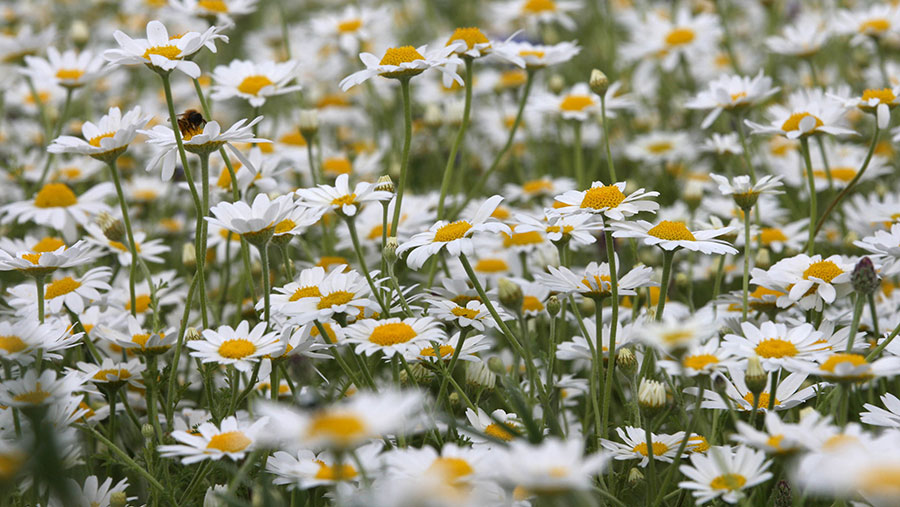Countryside Stewardship payment rates rise by 30%
 © Tim Scrivener
© Tim Scrivener Payment rates for Countryside Stewardship in England have been increased by 30% on average in a bid to attract more farmers in preparation for the agricultural transition to new post-Brexit green schemes.
Defra secretary George Eustice made the announcement during his speech to the virtual Oxford Farming Conference on Thursday 6 January.
Mr Eustice told delegates tuning in online that farmers should consider Countryside Stewardship “as a bridge to Local Nature Recovery” – one of three new agri-environment schemes that will reward Environmental Land Management (ELM).
See also: Landscape and Local Nature Recovery: What farmers need to know
He said about 50% of farmers in England were already in some form of Countryside Stewardship, but he urged more to sign up.
“Last year, we saw a 40% increase in demand for applications for Countryside Stewardship. We now have more than 40,000 farmers in England participating in either Countryside Stewardship or legacy HLS [Higher Level Stewardship] schemes,” said the minister.
“And we also know that if we can increase the numbers involved in this scheme then it increases those prepared for the new Local Nature Recovery scheme.”
(See table below for detail)
‘Powerful signal’
Mr Eustice said the commitment to increase Countryside Stewardship payment rates would send a “powerful signal” to farmers that Defra wants them to get involved in the scheme – if they are not already enrolled.
“For those who are early adopters and have already been engaged in Countryside Stewardship, they will automatically see an increase in the payments they receive for the work they are already doing,” confirmed the minister.
Mr Eustice encouraged the 40,000 or so farmers in England who have chosen not to get involved in the scheme so far to reconsider.
“I would urge them all to look again at Countryside Stewardship. We have made it simpler. We have removed some of the stifling bureaucracy that was a feature during the EU era, and we are increasing those payment rates,” he said.
A list of the revised payment rates has been published on Gov.UK.
For example, payments for AB1 nectar flower mix have increased from £519 to £579; AB12 supplementary winter feeding for farmland birds from £632 to £657; AB6 enhanced overwintered stubble from £436 to £493 and AB8 flower-rich margins and plots from £539 to £628.
Rate rises vary
Speaking during a press briefing later, Mr Eustice said the payment rate increases would vary according to the types of interventions.
Adjustments have been made by revisiting the original income foregone plus costs figures, verified by independent consultants.
“It’s the first step really of moving away from an income foregone approach towards something that is more generous, more market-based,” Mr Eustice told reporters.
“But the payment rates do change from intervention to intervention. There are some 250 different types of intervention that can be paid for, and the rate changes.”
Sandy Kapila, head of external affairs at the Rural Payments Agency, said on Twitter that a rolling start date for Countryside Stewardship was being “actively considered”. More information should be revealed in February, she added.
HLS excluded
Geoff Sansome, head of agriculture at Natural England, told Farmers Weekly that the payment rate increases do not apply to HLS, as generally the rates there are higher and underpinned by Entry Level Stewardship, particularly for upland and grassland options.
“It’s good to see that many of the options in CS now have significantly improved payment rates,” he said.
“These are based on the often-criticised income foregone plus costs basis, which many people don’t realise is actually a calculation based on crop or livestock gross margins, so they do take into account revenue, as well as costs.
“As farmers are very well aware this year, high commodity prices are invariably associated with equally high input prices, so margin is key.
“The stability and predictability of CS payments, plus the wide range of options, make them an attractive proposition for many who are beginning to, or are already undertaking environmental land management as an integral component of their food production.”
Defra expects HLS agreement holders to eventually transfer into Local Nature Recovery or the Landscape Recovery scheme, depending on the size of their operation and environmental ambitions.
NFU comment
An NFU spokesperson said: “The NFU welcomes the review and update of the Countryside Stewardship payment rates which were last set in 2014.
“We are pleased increased payment rates will apply to existing CS agreements going forward, including those that started on 1st January 2022. Our teams will now analyse the detail to understand how these changes compare with the payment rates for other agri-environment schemes.”
